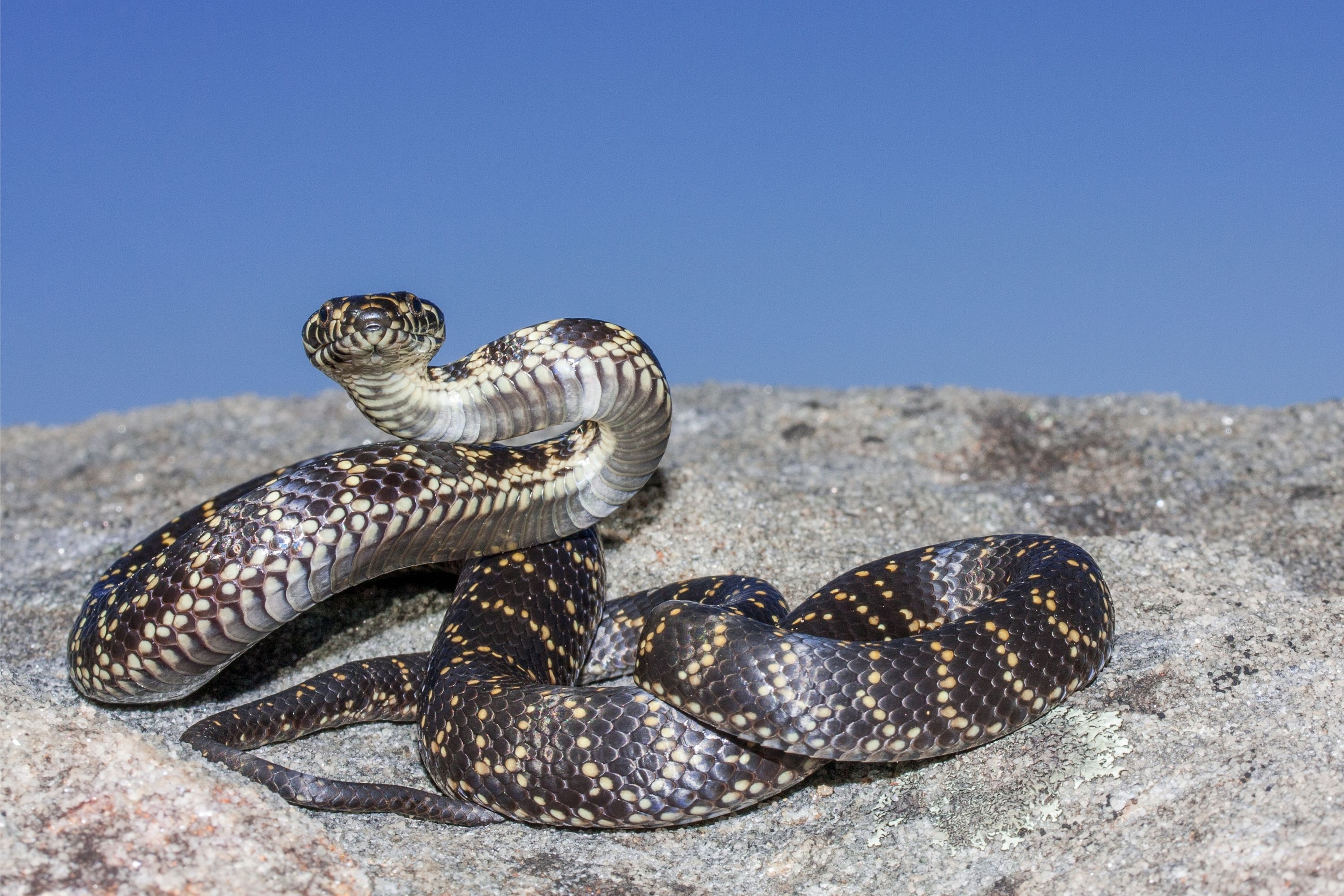Broad-headed snake
(Hoplocephalus bungaroides)

Description
The broad-headed snake (Hoplocephalus bungaroides) is a species of venomous snake in the family Elapidae. The species is restricted to the Sydney Basin in New South Wales, Australia. It is one of three snakes in the genus Hoplocephalus, all restricted to eastern Australia. It is currently endangered in New South Wales and is listed as vulnerable under the Commonwealth Legislation. German naturalist Hermann Schlegel described the species in 1837 as Naja bungaroides. The broad-headed snake is a small to medium-sized species of venomous snake, which attains an average total length (including tail) of 60 cm (24 in), although some records show that it can grow as long as 90 cm (35 in). It is black with numerous irregular yellow markings arranged in narrow cross-bands, which for inexperienced people can easily lead to confusion with a young diamond python, which is superficially very similar and found in the same habitat. The broad-headed snake is found in the Sydney Basin in New South Wales, Australia. The snake's choice of habitat depends on temperature, age, gender, and breeding status. In the colder months, adult and juvenile snakes reside in the crevices of sandstone outcrops on exposed cliff edges to maximise warmth from the sun. When the temperature rises in spring, adult males and non-breeding females move to adjacent woodlands and forests, inhabiting hollow trees during the summer months. Juvenile snakes and gravid females remain in the rocks and move to cooler, shaded areas. Their habitat has been degraded by urbanization, illegal rock removal, vandalisation and indiscriminate reptile collecting. The sandstone rocks that the snakes occupy are valued for landscaping purposes. Their removal has led to a loss of habitat for both the snakes and their prey. The broad-headed snake feeds infrequently on small reptiles and mammals. Snakes in captivity are able to maintain or gain weight when fed one to two newborn rats per month. In one documented case, a snake survived a fast lasting twelve months. Juveniles feed mostly on Lesueur's velvet gecko (Amalosia lesueurii) and occasionally on small skinks. Adults feed on Lesueur's velvet gecko, but also prey on other lizards, small snakes, and mice. Male broad-headed snakes reach maturity after five years whereas females require six. Mating occurs from autumn to spring, and mature females produce a litter every two years.
Taxonomic tree:







